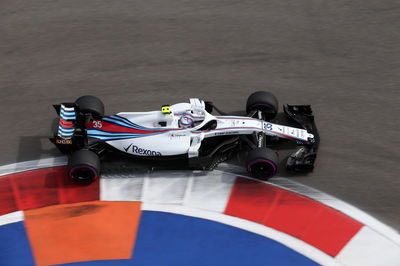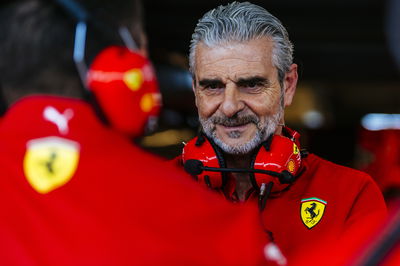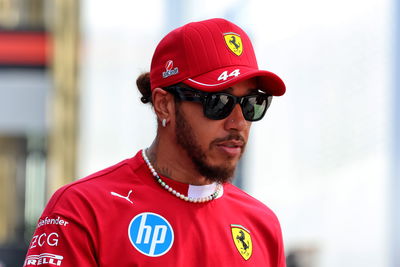The signs of promise for Williams’ 'next-gen' F1 future
2018 has been Williams’ annus horribilis in Formula 1. After being a consistent force in the upper-midfield through the V6 turbo era, the team’s fortunes took a significant dip this year, leaving it rooted to the foot of the constructors’ championship table.
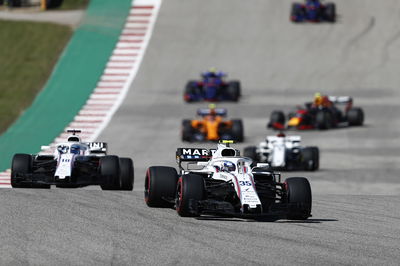
2018 has been Williams’ annus horribilis in Formula 1. After being a consistent force in the upper-midfield through the V6 turbo era, the team’s fortunes took a significant dip this year, leaving it rooted to the foot of the constructors’ championship table.
Points have been hard to come by for drivers Lance Stroll and Sergey Sirotkin this year, both of whom have struggled with the troublesome Williams FW41 car. Besides scores in Azerbaijan and Italy, Williams has failed to breach the top 10 at any other race. In a year that has seen the likes of Sauber and Toro Rosso punch well above their weight, Williams has been mired at the back of the field.
Deputy boss Claire Williams doesn’t sugarcoat the team’s woes when we meet at the Circuit of The Americas, the fourth to last round of a season the team is eager to forget in a hurry. Upon reminding her of the proximity to the end of the year, her reply is: “Thank God!” At least she can see the bright side…
"To think I’ve repeated countless times this year ‘it will be nice to see the back of it’,” Williams says. “It’s probably been one of the worst years that I’ve ever had at Williams.
“But I like to always try and look positively at a situation. I think we will come out of this year as a team a lot stronger. As a result of what we saw at the start of the season, we’ve obviously done a huge amount of work, most of which we haven’t talked about, we wouldn’t talk about. [We’ve done] a lot of work behind the scenes in order to try and come out much stronger, and I fully believe that will set Williams up for success in the future.”
While Williams refuses to look at the team’s spirit as a silver lining - “positive, but maybe not that” - she also takes heart from the way in which it has handled itself through one of the most difficult years in its history. Whereas other teams in recent history have been known to go more nuclear in tough times, the whole Williams has remained resilient.
“The test of any situation like this is always how you recover from it, and how you deal with it throughout, and I think probably everybody in this team has done a really good job of handling this situation,” Williams explains.
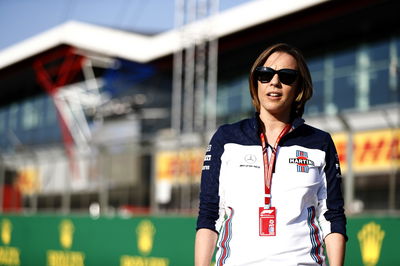
“We haven’t imploded. We haven’t behaved in a negative way. We’ve just gone about this season quietly with our heads held high as much as we can. We haven’t aired our dirty laundry in public. We’re just getting through it the best that we can together as a team, and I’m really proud as I said of everybody that’s contributed to that.”
The team’s on-track woes are such that event the statistical high points - the top 10 finishes at Baku and Monza - don’t register on Williams’ personal radar as achievements to fanfare. For her, it’s the work off-track that can give hope for a better future.
“I don’t think our high points haven’t necessarily been on the track this year,” Williams says. “I think they’ve probably been away from them. I think that talks to the work that has been going on behind the scenes in order to try and get to the bottom of our issues and put new structures, new processes in place in order to set ourselves better going into 2019.
“Next year for us is going to be very much that we can push the reset button. It’s definitely going to be next-gen Williams from 2019. I’m not saying that we’re going to be coming out and we’re going to be on the podium. But who knows what could happen?
“But for next year, there’s going to be a lot of changes that will have been implemented across the course of this year that we’ll see come out next year that we’ll be able to talk about in greater detail, that you’ll be able to physically see as well, some big changes, and we’re working towards that now.”
The day of our interview comes just an hour or so after the latest F1 Extreme Innovation Series event in Austin, a new scheme with the MIT Sloan School of Management that looks to draw lessons from the F1 world that can enhance businesses around the world. Williams head of vehicle Rob Smedley had been present there, explaining how he found a need to shift some of the structure and methodology at the team upon joining in 2014. As one example, he said how different departments struggled to talk with each other and integrate. Forcing them to do so created some level of conflict, yet it was for the better, allowing different teams to see problems from various different viewpoints.
The need to change the company culture is something Williams is also working on, recognising that the big issues at the team stem from more than simply the car being slow.
“I think there are wider problems that have become very apparent across the course of the year around the culture at Williams, and how we probably traded rather blindly on the culture that we had probably 10, 20 years ago in the business that Frank [Williams] and Patrick [Head] generated,” Williams says.
“[It’s] probably just purely by chance, I don’t think Frank and Patrick necessarily intended went about creating a certain culture. It just grew out of their personalities and how they went about their work. We haven’t done a lot of work on that in the past five years.
“For me, getting the culture right in this organisation is going to be a big step towards getting us back to where we want to be, and that’s competing competitively on the race track.
“We need to try and drive a new Williams way rather than focusing on the old Williams way. Clearly, the old Williams way isn’t working. If it was working, we still would be winning races and world championships.”
The most evident change at Williams already made for 2019 comes in its driver line-up. With Lance Stroll bound for Force India following his father’s takeover of the team, Williams confirmed earlier this month it had signed Mercedes junior and current Formula 2 championship leader George Russell to a race seat. Austin was the first race since his confirmation, and he was quick to make an impression.
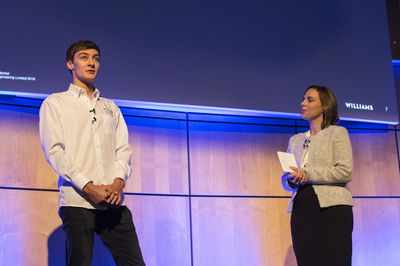
His approach to everything that he’s done with me in order to have secured this seat has been so impressive. He turned up to our first meeting with a notebook - no F1 driver has ever turned up to a meeting with me with a notebook!” Williams says.
“Just his general approach, he came to this race, his first after signing a contract and made the announcement, and he went into our garage and shook everyone’s hands. That says to me the kind of man that he is, and that is exactly what we want as a driver for Williams.
“He’s going to be a big part of rebuilding this team, rebuilding this team’s morale, and rebuilding its success on the race track.”
Russell may be very keen and an extremely capable driver, but his arrival also marks a real statement and shift for the whole Williams operation. Whereas Stroll and current teammate Sergey Sirotkin both bring a decent amount of financial backing to the team, helping swell its coffers, Russell arrives with none of that. There’s no major sponsor. There’s no reduced gearbox or engine deal from Mercedes. He arrives on talent and talent alone.
Does that not, therefore, create a funding shortfall? “No. We’ve already made up that shortfall, and that was why we were able to secure George,” Williams stresses.
“That’s not the second driver’s responsibility to secure any finance that enabled us to have George in the first seat, and I don’t really want to talk about the commercials around the second seat. I don’t think that it would be appropriate.”
Williams may naturally not wish to open up on the commercial aspects of the team, but Russell’s arrival speaks volumes. The team has worked hard to get the budget in place to allow for him to be signed, having quite clearly felt the effects of having two drivers signed chiefly on backing rather than ability this year. It is a pointed statement for the future and for where Williams is heading: 2018 is the low point, and from here will start the upward swing.
As for that second seat? A handful of names are in contention: the incumbent Sirotkin; his compatriot and current Formula 2 racer Artem Markelov; team reserve Robert Kubica; and Force India’s Esteban Ocon, who has one final shot at a place on the grid next year. One of this quartet seems the most likely partner for Russell in 2019, but Williams is in no real rush to make a final call.
“We have a short shortlist which we are working through at the moment, and as much as it was important securing a driver with talent for the first seat, it will be for the second seat as well,” Williams says.
“We have options. We just need to make sure that we secure the best driver that we possibly can based on the criteria that we set ourselves for that seat.”
Balancing the books is a tricky task, yet if Williams were to complete a swoop for Ocon, thus completing an all-Mercedes junior line-up for 2019, it could stake a claim for having one of the most dynamic and exciting driver pairings on the entire grid - in-keeping with the vision for the “next-gen” vision the deputy team boss has.
Times have been tough at Williams, but there are real signs of promise for the future. While 2018 may be a season to forget, it could turn out to be a crucial catalyst for Williams to recover and a thrive once again.
